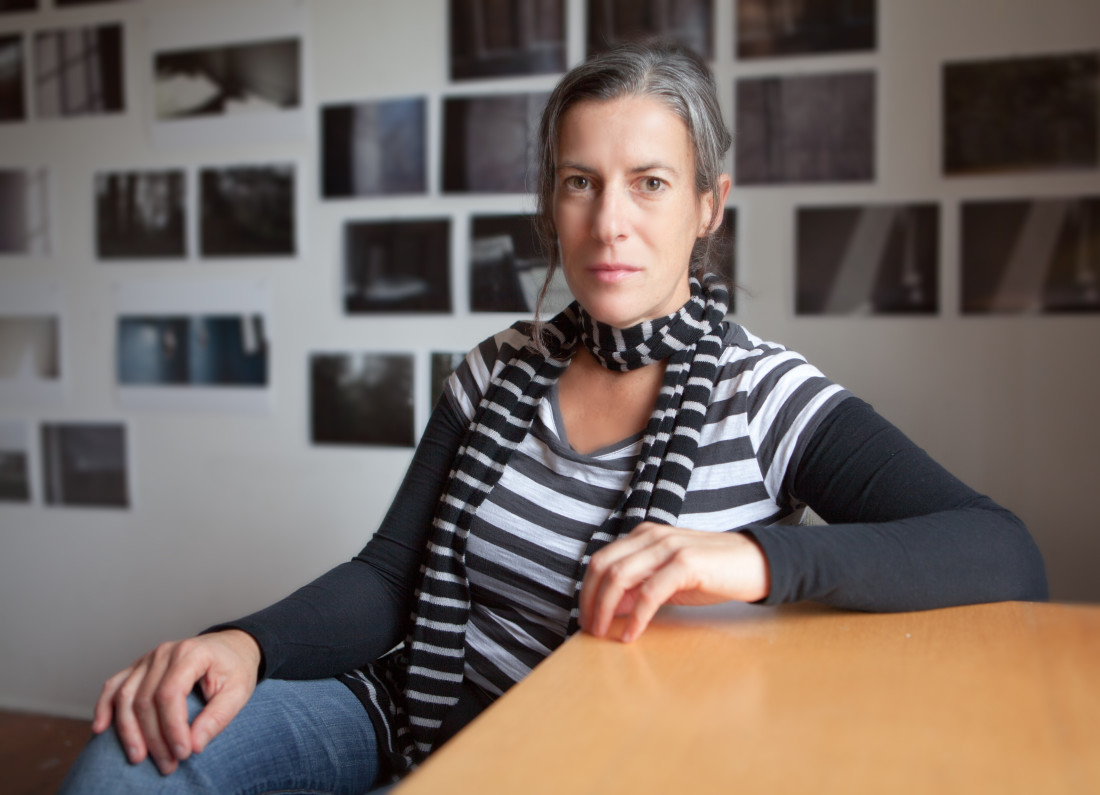Fragmentation, time and space are among the issues explored in the latest work by Asheville-based multimedia artist Dawn Roe. For this reason, it seems fitting that parts of the project will be on display at two separate locations. On Wednesday, Aug. 1, essay, v. will open at Revolve at RAMP South Studio, followed two days later by Conditions for an Unfinished Work of Mourning at the Tracey Morgan Gallery.
The coinciding exhibits capture various elements of Roe’s recent travels to the coastal border of France and Spain with fellow artist and friend Leigh-Ann Pahapill (whose work is also featured in essay, v.). The two set off to trace the doomed steps of German philosopher Walter Benjamin, who committed suicide in 1940 in the nearby town of Portbou while attempting to escape invading Nazi forces.
In the process of researching Benjamin’s tragic journey, the artists learned more about the region’s history. Among the information discovered was a network of trails through the Pyrenees Mountains used by more than half a million refugees during the Spanish Civil War and World War II. Through video, digital photography and cyanotypes (one of the oldest photographic techniques), the exhibits examine the terrain and its consequences on those who traversed them.
The use of cyanotypes, says Roe, is also a chance for the collection to honor and highlight the “often overlooked role of women in the history of photography.” Roe notes that Anna Atkins was among the earliest contributors to the medium. A 19th-century botanist and photographer, Atkins’ 1843 publication, Photographs of British Algae: Cyanotype Impressions, is considered the first book to feature still images.
Gallery owner Tracey Morgan says she admires Roe’s work because of its intentionality, as well as her physical commitment to the project. “I enjoy how she chooses to use her voice as an artist to shine light on historical narratives,” Morgan explains. “The work in these exhibitions are not spontaneous in nature, they are thoroughly researched and meticulously created. [Dawn] not only studied and examined the footpath of Walter Benjamin through the Pyrenees, but she made part of the journey each day with paper, cloth and various cameras to create the work in this series.”
Whereas traditional cyanotypes capture imprints of recognizable objects, such as flowers, Roe’s approach gravitates toward abstraction. Cracks in the terrain, segments of stony pathways and the stems of weeds are among the elements included on her blueprints. “It’s not the most direct work,” the artist says. “It requires a bit from the viewer in terms of connecting with and thinking about the objects.”
Roe also recorded the physical labor that went into creating these cyanotypes. The video will be featured in essay, v. Along with chronicling the work itself, she considers the footage a way of demystifying the creative process. Bits of humor and absurdity are shown throughout the piece. “I’m wearing these stupid floral dresses, and it’s really hot outside, and I’m sweating and purposefully letting myself be seen in that space,” she says.
At the same time, the video provides viewers with glimpses of the terrain that Benjamin and hundreds of thousands of other refugees took in their attempts to escape tyranny, oppression and death. The project offers a chance to remember the dead, but it is also an opportunity to find ways of connecting with them in the present.
Despite the decades, oceans and experiences that divide Benjamin and Roe, his writings, she notes, continue to shape and influence her work. “A number of his essays specifically engage with photography and film studies,” she explains.
For her latest project, she adds, a particular quote from one of Benjamin’s final writings has resonated with her and taken on new meaning. In his 1940 essay, “Theses on the Philosophy of History,” Benjamin writes, “For every image of the past that is not recognized by the present as one of its own concerns threatens to disappear irretrievably.”
Ultimately, Roe hopes both essay, v. and Conditions for an Unfinished Work of Mourning will inspire patience within her viewers, as a well a deeper appreciation for the connectivity across time and space. “I like the pairing of emotional and intellectual,” she says. “Poetics is never simply aesthetic and that immersive experience in the visual. It always has to come from a thoughtfulness about what it is that you’re looking at.”
WHAT: essay, v.
WHERE: Revolve at RAMP South Studio, 821 Riverside Drive, revolveavl.org
WHEN: Opening reception and artist discussion Wednesday, Aug. 1, 6-8 p.m. On view through Saturday, Sept. 15. Free
WHAT: Conditions for an Unfinished Work of Mourning
WHERE: Tracey Morgan Gallery, 188 Coxe Ave., traceymorgangallery.com
WHEN: Opening reception Friday, Aug. 3, 6-8 p.m. On view through Saturday, Sept. 22. Free




Before you comment
The comments section is here to provide a platform for civil dialogue on the issues we face together as a local community. Xpress is committed to offering this platform for all voices, but when the tone of the discussion gets nasty or strays off topic, we believe many people choose not to participate. Xpress editors are determined to moderate comments to ensure a constructive interchange is maintained. All comments judged not to be in keeping with the spirit of civil discourse will be removed and repeat violators will be banned. See here for our terms of service. Thank you for being part of this effort to promote respectful discussion.